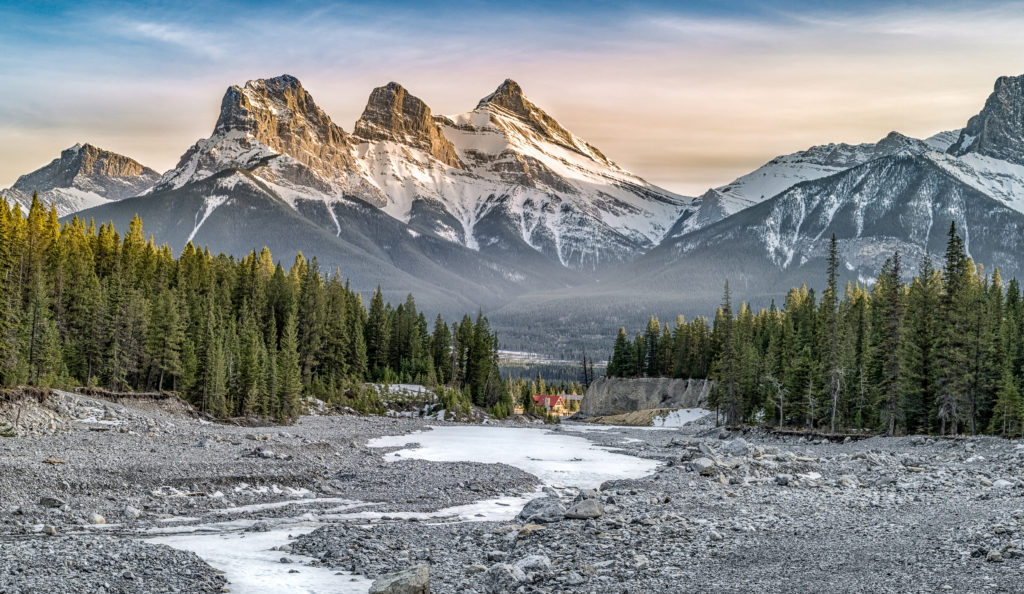Australian company revives its push for a controversial coal mine in Alberta

A company whose application for a coal mine in Alberta was rejected two years ago is back – with a new name, and an updated request to explore its lease in the eastern foothills of the Rocky Mountains.
Northback Holdings Corp., formerly Benga Mining Ltd., is a subsidiary of Australian mining giant Hancock Prospecting Pty Ltd. It is again eyeing a potential mine at Grassy Mountain, submitting applications to the Alberta Energy Regulator (AER) for a 105-day exploratory drilling program and a request for a water diversion.
Northback told The Globe and Mail in an e-mail that those activities would collect technical data and allow it to assess the merits of miningthe metallurgical coal, which is used to make steel.
Grassy Mountain is on the site of an old mine that closed about five decades ago. The new, open-pit mine that Benga proposed for the land forecast production of 93 million tonnes of metallurgical coal over a 23-year life.
A joint federal-provincial regulatory panel rejected Benga’s Grassy Mountain application in 2021, finding that the project would likely result in significant adverse effects on the environment and on some First Nations, which outweighed any economic benefits. The Alberta Court of Appeal denied the company’s request to appeal that regulatory decision.
Northback’s push to develop Grassy Mountain comes at a time of renewed focus on coal mining in Canada, with Teck Resources Ltd. agreeing to sell its coal business to Swiss commodities trading giant Glencore PLC and two Asian steelmakers in an $8.9-billion transaction.
Critics question why the AER is entertaining the company’s applications, which it filed in August, when Benga’s plan for the same site was rejected two years ago.
Environmental groups, local ranchers and those living in the Oldman River watershed, downstream from Grassy Mountain, have a long list of concerns about the impact of coal mines in the eastern slopes.
The main one is water. Southwestern Alberta is in the grip of severe drought. Water levels are at unprecedented lows with shortage advisories issued across the region.
Laura Laing and her husband, John Smith, operate Plateau Cattle, a third-generation ranch outside Nanton, and graze their cattle on the eastern slopes of the Rocky Mountains. Some of the streams and tributaries that help feed their operation have dried up, and this year – for the first time in its history – the ranch was unable to harvest even a single bale of hay.
“Coal is a thirsty business,” Ms. Laing said in an interview. But with water drying up, where would an allocation for Grassy Mountain even come from?
“To even think about accepting an application for water diversification for the purpose of coal exploration in the Oldman River basin is just ludicrous,” she said.
It’s not just the quantity of the water that worries her, but the effect a coal mine would have on the quality of it. Selenium can be toxic to fish populations, for example, and runoff of coal-mining waste often releases large quantities of the contaminant.
Northback’s applications have reopened what was a fiery debate in Alberta just two years ago.
In 2021, intense public backlash – including a court challenge and vocal rallying by Alberta country-music star Corb Lund – led more than 100,000 people to sign petitions demanding the government bring back the 1976 Coal Policy land protection rule, which it had scrapped the year prior. While some communities and First Nations support mining for its economic benefits, tearing up the coal policy had made it easier for companies to pursue open-pit projects on formerly protected fragile lands and watersheds flanked by the Rocky Mountains.
The government ended up halting exploration for coal on a swath of sensitive land, cancelled a series of leases earmarked for potential new mines, and struck a committee to consult with Albertans on new coal-mining rules.
An order by then-energy minister Sonya Savage in 2022 extended the ban on coal exploration, and directed the AER to suspend approvals and refuse new applications for exploration and development on other designated land in the foothills – unless they were related to an advanced coal project or an active approval.
Northback points out that the Grassy Mountain project has advanced status. The AER, however, said in an e-mail that it has not yet determined whether Grassy Mountain is an advanced coal project. Only then will it carry out a full technical review of the application.According to the AER, advanced coal projects include those where applicants have submitted a project summary to the regulator to determine whether an environmental impact assessment is required.
If a mine goes ahead, Northback said, “it will be a world leader in mining technology and environmental stewardship.”
When the previous mine ceased operations in the 1970s, the owners made no effort to clean up the site, Northback added. The company said reopening Grassy Mountain would allow it to “implement a world-class reclamation plan to redevelop the land for future use by Albertans.”
Alberta Energy Minister Brian Jean said in an interview that he won’t try to influencethe work of the AER.
“I’ve got to have an open mind, because it’s not my decision,” he said.
And while he wouldn’t commit to introducing any further rules to lessen the effects of coal mining, he said, “We can’t risk our environment and our drinking water.”
Ms. Laing says the fact the Grassy Mountain project is being reconsideredhas eroded Albertans’ patience and trust.
“We have a new government in place that has the opportunity to do the right thing, but once again, we’re back in this grey area,” she said. “Coal development is not something that’s going to be accepted in the Rocky Mountains.”
Editor’s Note:
(Nov. 21, 2023): This story has been updated to reflect the fact that, despite Northback’s claim that the Grassy Mountain project has advanced status, the Alberta Energy Regulator says it has not yet determined the project’s status.
{{ commodity.name }}
{{ post.title }}
{{ post.date }}

Comments